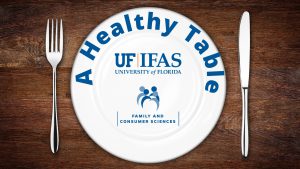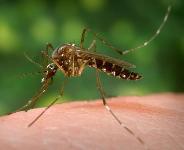by Kendra Hughson | Feb 5, 2025
In recent years, the conversation around mental health has gained significant momentum, particularly in the context of the workplace. As employees increasingly recognize the importance of mental well-being, employers are also beginning to understand that a mentally healthy workforce is not just a moral imperative but a key driver of productivity and overall business success.
The Importance of Mental Health in the Workplace
Mental health issues can significantly impact employee performance, engagement, and retention. According to the World Health Organization (WHO), depression and anxiety disorders cost the global economy approximately $1 trillion each year in lost productivity. The ripple effects can be profound: when employees are struggling with their mental health, it can lead to increased absenteeism, decreased morale, and lower job satisfaction.
Conversely, workplaces that prioritize mental health often see tangible benefits. Organizations that invest in employee well-being report higher productivity levels, reduced healthcare costs, and lower turnover rates. A supportive work environment can enhance employee loyalty, creativity, and teamwork, ultimately contributing to a positive corporate culture.
Creating a Supportive Environment

When employees are struggling with their mental health, it can lead to increased absenteeism, decreased morale, and lower job satisfaction. Photo Credit: Kendra Hughson
- Open Communication: Fostering a culture of open dialogue about mental health is crucial. Employees should feel safe discussing their mental health without fear of stigma or repercussions. Regular check-ins, feedback sessions, and anonymous surveys can help gauge employee sentiment and identify areas for improvement.
- Training and Resources: Providing training for managers on recognizing signs of mental health issues and how to support employees can create a more empathetic workplace. Additionally, offering resources such as Employee Assistance Programs (EAPs), mental health days, and wellness workshops can equip employees with the tools they need to manage stress and maintain their mental well-being.
- Flexible Work Arrangements: The rise of remote work has highlighted the importance of flexibility in maintaining work-life balance. Offering flexible hours or hybrid work options can help employees manage their personal and professional responsibilities more effectively, reducing stress and promoting mental health.
- Promoting Work-Life Balance: Encouraging employees to disconnect after work hours and take regular breaks can prevent burnout. Organizations can set a precedent by respecting personal time and promoting a culture where taking time off for mental health is not only accepted but encouraged.
- Wellness Programs: Implementing wellness initiatives such as mindfulness sessions, fitness classes, or stress management workshops can provide employees with valuable coping strategies. These programs can foster a sense of community and belonging, which is vital for mental health.
The Role of Leadership
Leadership plays a pivotal role in shaping workplace culture. Leaders who prioritize their own mental health and model healthy behaviors can inspire employees to do the same. By being transparent about their struggles and openly discussing mental health, leaders can help break down the stigma that often surrounds these issues.
Moreover, investing in leadership training that focuses on emotional intelligence can enhance leaders’ ability to empathize with their teams, recognize signs of distress, and foster a supportive environment.
Conclusion
As mental health continues to gain recognition as a critical component of overall well-being, organizations must take proactive steps to support their employees. By fostering open communication, providing resources, promoting work-life balance, and investing in leadership development, companies can create a workplace culture that prioritizes mental health. The benefits are clear: a healthier, happier workforce is not only good for employees but also for business success. Embracing mental health as a priority will lead to a more resilient, engaged, and productive workplace for all.
Source: ChatGBT
During the preparation of this work the author used ChatGBT to compile information about mental health in the workplace. After using this tool/service, the author reviewed and edited the content as needed and takes full responsibility for the content of the publication.

by Kendra Hughson | Dec 6, 2024
We spend a considerable amount of time at work. Often, we spend more time with our co-workers than we do our own families. Fostering a workplace that promotes positive mental health is good for everyone. A positive work environment enhances productivity, job satisfaction, and overall employee well-being. While management and organizational policies play a significant role, contributing to a positive workplace culture is everyone’s job. Here’s how employees at any level can make a difference.
- Practice Open Communication
Open communication builds trust and fosters a culture of transparency. Employees can encourage a positive work environment by sharing ideas, voicing concerns respectfully, and providing constructive feedback. Listening actively to colleagues without interrupting or judging helps build mutual respect and makes everyone feel valued.
Tips to practice open communication:
- Share ideas or concerns in team meetings.
- Approach colleagues directly with questions or concerns instead of relying on assumptions.
- Use tools like Slack or email to keep teams updated, but also recognize the value of face-to-face interactions for more sensitive conversations.
- Show Appreciation and Recognition
Small gestures of appreciation can make a big difference in the workplace. Recognizing a coworker’s hard work or saying “thank you” for assistance fosters a sense of belonging. This builds morale and encourages others to acknowledge each other, creating a supportive environment.
Ways to show appreciation:
- Give a shoutout during meetings for colleagues who went above and beyond.
- Send a quick thank-you email or message to someone who helped you with a task.
- Celebrate team achievements, whether small or big.
- Be Respectful and Engaging
Respect and engagement are fundamental to a positive work environment. This means treating everyone with courtesy, considering others’ perspectives, and avoiding behaviors that could alienate colleagues. A respectful environment allows people to feel safe to express their ideas and be themselves.
How to promote respect and engagement:
- Avoid interrupting colleagues during discussions.
- Respect time boundaries and avoid unnecessary after-hours communication.
- Include others in discussions and decision-making whenever possible.
- Be open-minded and considerate of others’ ideas and backgrounds.
- Take Responsibility and Practice Accountability
Accountability is key to building trust within teams. By taking responsibility for their actions and learning from mistakes, employees contribute to a culture of honesty and reliability. When everyone holds themselves accountable, it minimizes blame-shifting and encourages collective problem-solving.
Ways to practice accountability:
- Own up to mistakes quickly and discuss how to avoid them in the future.
- Set realistic deadlines and follow through with commitments.
- Ask for help or clarification if you’re unsure about something.
- Collaborate and Encourage Teamwork
Teamwork is essential for creating a positive work environment where people feel connected. Collaboration helps foster a sense of community and shared purpose. It allows employees to leverage each other’s strengths and learn from diverse perspectives.
How to promote teamwork:
- Be willing to help team members who may need support.
- Participate actively in team projects and brainstorming sessions.
- Celebrate shared successes and acknowledge each team member’s contributions.
- Offer guidance to new employees or those adjusting to a role.
- Maintain a Positive Attitude
Just as negativity can spread quickly, a positive attitude is also infectious. When employees focus on solutions instead of dwelling on problems, it improves the morale of the whole team. A positive attitude, especially during challenging times, can inspire others to stay motivated.
Tips for maintaining a positive attitude:

When employees are struggling with their mental health, it can lead to increased absenteeism, decreased morale, and lower job satisfaction. Photo Credit: Kendra Hughson
- Practice gratitude by focusing on what’s going well each day.
- Take breaks to recharge and stay mentally refreshed.
- Offer encouragement and motivational words to colleagues.
- Set Healthy Boundaries
Healthy boundaries prevent burnout and maintain a work-life balance, which ultimately contributes to a happier and more productive workforce. By respecting both their own and others’ boundaries, employees help create a sustainable and positive work environment.
Strategies for setting boundaries:
- Avoid checking work emails or messages outside of work hours whenever possible.
- Politely decline additional tasks if your workload is full.
- Respect colleagues’ boundaries by scheduling meetings within core work hours.
- Participate in Team-Building Activities
Team-building activities help employees get to know each other and build trust outside regular work tasks. Taking part in these activities can boost morale and create bonds, leading to a more cohesive and positive workplace.
Ideas for team-building:
- Participate in organized events like team lunches, outings, or volunteer days.
- Engage in virtual games or icebreakers in remote or hybrid settings.
- Suggest occasional fun activities or breaks, like coffee chats or themed lunches.
- Prioritize Professional Growth
A positive work environment is one where employees feel they can grow and improve. By seeking opportunities to learn and develop, employees contribute to a culture of continuous improvement, which can inspire others as well.
Ways to prioritize growth:
- Attend workshops, webinars, or training sessions.
- Seek feedback from peers and managers to improve skills.
- Share knowledge with colleagues to create a collaborative learning culture.
- Be Mindful of Workplace Culture
Every workplace has a unique culture, and understanding it helps employees interact effectively and contribute positively. Being mindful of organizational values, norms, and unwritten rules can help employees align with and positively influence the workplace culture.
Tips for understanding workplace culture:
- Observe how communication happens within the team (formal vs. informal).
- Engage in onboarding or mentorship programs that introduce new hires to the culture.
- Contribute ideas in line with the organization’s goals and mission.
Conclusion
Building a positive work environment is everyone’s job. By focusing on open communication, respect, appreciation, accountability, and a collaborative mindset, employees can foster a culture of positivity and engagement. Small, consistent actions make a big difference in creating a supportive, enjoyable, and productive workplace for everyone.
Source: ChatGPT
During the preparation of this work the author used ChatGPT to compile information about mental health in the workplace. After using this tool/service, the author reviewed and edited the content as needed and takes full responsibility for the content of the publication.

by Kendra Hughson | Feb 21, 2021

Kendra during her professional development leave at Purdue University.
Kendra Hughson is a Regional Specialized Agent in Family and Consumer Sciences. She is based in Quincy, Florida and covers the sixteen counties in the panhandle. Kendra leads the northwest district county faculty in developing districtwide family and consumer sciences programs. Kendra is also currently serving as co-chair of the statewide family and consumer sciences program.
Kendra began her career with Michigan State University Extension in a suburban county in southwest Michigan after completing an internship program in the county office. With a bachelor’s degree in family studies, she intended to continue her education in marriage and family therapy while working as an extension agent. Kendra caught the “Extension bug” and ended up completing her master’s degree in Family and Consumer Sciences at Western Michigan University.
Kendra was hired with the University of Florida/IFAS Extension in 2007 leaving the snow, ice, and frigid winters behind. She has served as an agent, a county extension director, and returned to her passion for family and consumer sciences as a regional specialized agent. Kendra works primarily in health and wellness but enjoys the variety of family and consumer science programs. She studied evaluation during a professional development leave in 2018 and has since been passionate about telling the story of how family and consumer sciences programs improve the lives of the people with which we work.

Kendra and her daughter in St. Petersburg, FL.
Kendra lives in Tallahassee with her daughter and dog. Kendra enjoys travelling, including playing tourist in the sunshine state and visiting Lake Michigan in the summertime. When not working or managing family activities, Kendra enjoys reading, cooking (not baking), sewing, and being outdoors.
by Kendra Hughson | Feb 1, 2021
In the midst of the COVID-19 pandemic, many of us have turned to cooking more meals at home. Cooking meals and eating at home has many benefits. When preparing meals, you can select the ingredients and choose healthy recipes lower in saturated fats, sodium, and sugar. When eating out, we tend to eat more food. You can more easily control your portion sizes when eating at home. Remember to include a variety of fruits and vegetables in your main dishes and side dishes. Finally, preparing and eating meals together is not only a fun way to teach healthy eating habits and cooking skills, but it is also a great way to connect with each other at the end of the day.
healthy recipes lower in saturated fats, sodium, and sugar. When eating out, we tend to eat more food. You can more easily control your portion sizes when eating at home. Remember to include a variety of fruits and vegetables in your main dishes and side dishes. Finally, preparing and eating meals together is not only a fun way to teach healthy eating habits and cooking skills, but it is also a great way to connect with each other at the end of the day.
We invite you to join us for A Healthy Table: Virtual Cooking School. In our virtual cooking school, you will learn how to prepare healthy meals for your family through self-paced online lessons and hands-on cooking activities. You will have opportunities to engage in monthly live virtual cooking demonstrations and interactive learning experiences.
Register before February 9th and save 20% off the ticket price. Early registrants gain access to a bonus class and kick-off event. Tickets are on sale for $19.99 until February 9th and $25 thereafter. Registration will close on February 23. Once registered, you will receive the Zoom class link and the link to the class website. Register here: http://bit.ly/ahealthytable.
The monthly Zoom class events will be held from 6:30-7:30 pm CT/ 7:30-8:30 pm ET on:
- Tuesday, February 9th: Kickoff Event Available for Early Birds only Program introduction and a sweet, healthy treat demonstration.
- Tuesday, February 23rd: Lesson 1, Kitchen skills primer
- Tuesday, March 23rd: Lesson 2, Cooking techniques – baking, grilling, roasting
- Tuesday, April 27th: Lesson3, Simple dishes – eggs, breads, salads, pasta
- Tuesday, May 25th: Lesson4, One dish meals – one-pot, slow cooker, packet meals
- Tuesday, June 22nd: Lesson 5, Entertaining and special occasions – setting a table, appetizers
Come cook with us and set your table for better health.
References:
Benefits of Cooking at Home
Cooking at Home for Healthier Eating
Benefits of Family Meals

by Kendra Hughson | Mar 26, 2020

Mosquito Aedes Aegypti_2020
Photo Source: UF/IFAS
Author: Whitney Cherry
COVID-19 has been driving public and private discussion as of late. But, we have to stay vigilant in working against all public health threats. One of the threats we typically start talking about this time of year is mosquito borne illnesses and preventative mosquito control. Not only are mosquitoes pests, but they can transmit some diseases we wouldn’t want, even under normal circumstances.
So what’s the reality? While the incidence of mosquito borne illness is much lower with the advent of modern medicine and basic public practices of wearing bug spray and dumping or treating standing water, it’s definitely not unheard of. The Zika scare is not such a distant memory afterall. And EEE (eastern equine encephalitis) was at an unusual high last year in horses in the panhandle. So what can we do?
With recent flooding in some areas and the weather warming, we can expect to see increasing populations of mosquitoes. Additionally, as the weather warms, we all tend to spend more time outside, increasing our likelihood of mosquito bites. Further exacerbating the situation are the widespread quarantine measures keeping many of us home. The late afternoon and early evening hours bring ideal weather to step outside and enjoy a little time away from TV and computer screens. We encourage fresh air and exercise outdoors, but we also encourage basic safety. So wear bug spray if you’re outside early morning and especially near, during, or shortly after dusk. Wear long sleeves and pants and socks if you can stand it. And keep standing water out of containers on your property. If this isn’t possible, look for safe water treatment options. The most prevalent spreaders of disease (Aedes aegypti) actually require these containers of water to complete their life cycle.
For more information on this or other Extension-related topics, call or email your local extension office.
Related mosquito information: http://edis.ifas.ufl.edu/results.html?q=mosquito+borne+illness&x=0&y=0#gsc.tab=0&gsc.q=mosquito%20borne%20illness&gsc.page=1








